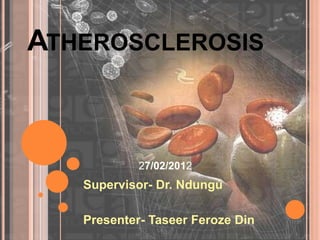Atherosclerosis is a condition characterized by thickening of arterial walls due to fatty material accumulation, primarily affecting developed nations. Key risk factors include lifestyle choices such as diet, physical inactivity, and genetic predispositions, leading to increased cardiovascular disease rates, especially in Africa. The pathogenesis involves multiple stages starting from endothelial injury to smooth muscle cell recruitment, resulting in complications like myocardial infarction and arrhythmias.

















